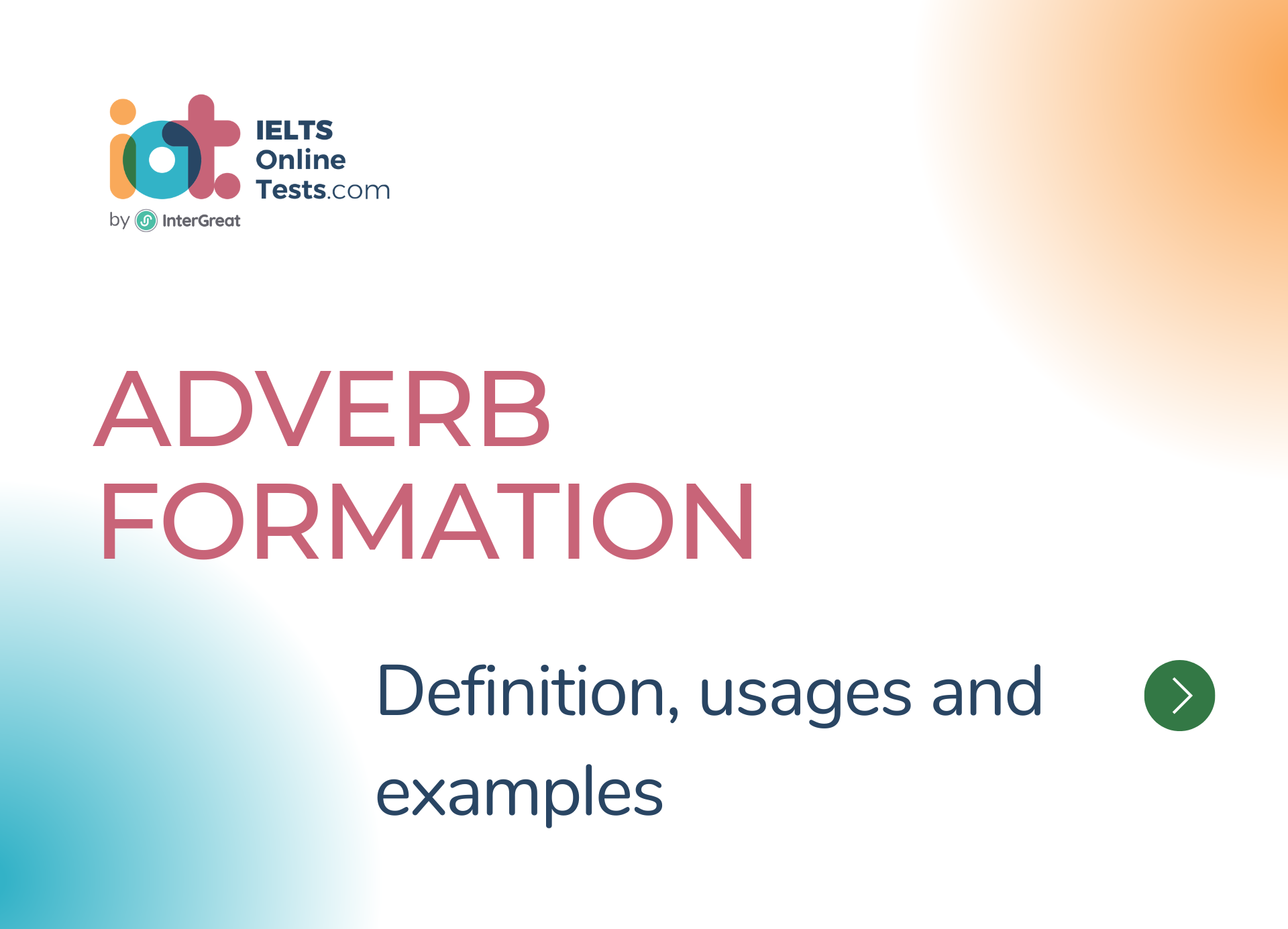
Adverb Formation
Adverbs can be formed in various ways, depending on the base word or the intended meaning.
Here are some common methods of adverb formation:
Adding "-ly": Many adverbs are formed by adding the suffix "-ly" to an adjective. This is the most common way to form adverbs.
- Example:
- quick (adjective) → quickly (adverb)
- careful (adjective) → carefully (adverb)
- loud (adjective) → loudly (adverb)
- Example:
Using the Same Form as Adjective: Some adjectives and adverbs have the same form, meaning they look and sound the same.
- Example:
- fast (adjective) → fast (adverb)
- hard (adjective) → hard (adverb)
- early (adjective) → early (adverb)
- Example:
Modifying Phrases: Adverbs can be formed by modifying phrases, often using prepositions or conjunctions.
- Example: in a hurry, by accident, with care, at times
- Phrase: in a hurry → Adverb: hurriedly
- Phrase: by chance → Adverb: accidentally
- Phrase: with joy → Adverb: joyfully
- Example: in a hurry, by accident, with care, at times
Using Comparative or Superlative Forms: Comparative and superlative forms of adjectives can also function as adverbs, expressing a higher or lower degree of an action or quality.
- Example:
- He ran faster than before. (comparative adverb),
- They worked hardest on the project. (superlative adverb)
- Example:
Irregular Forms: Some adverbs have irregular forms that do not follow the usual patterns.
- Example:
- well (adverb),
- better (comparative adverb),
- best (superlative adverb)
- Example:
It is important to note that not all adverbs end in "-ly." Some adverbs have irregular forms or have the same form as the corresponding adjective. Additionally, some words can function as both adjectives and adverbs depending on how they are used in a sentence.
When forming adverbs, it's crucial to consider the context and meaning to ensure accuracy and clarity in communication. Adverbs help us provide additional information about how, when, where, or to what extent an action occurs, adding depth and precision to our language.




